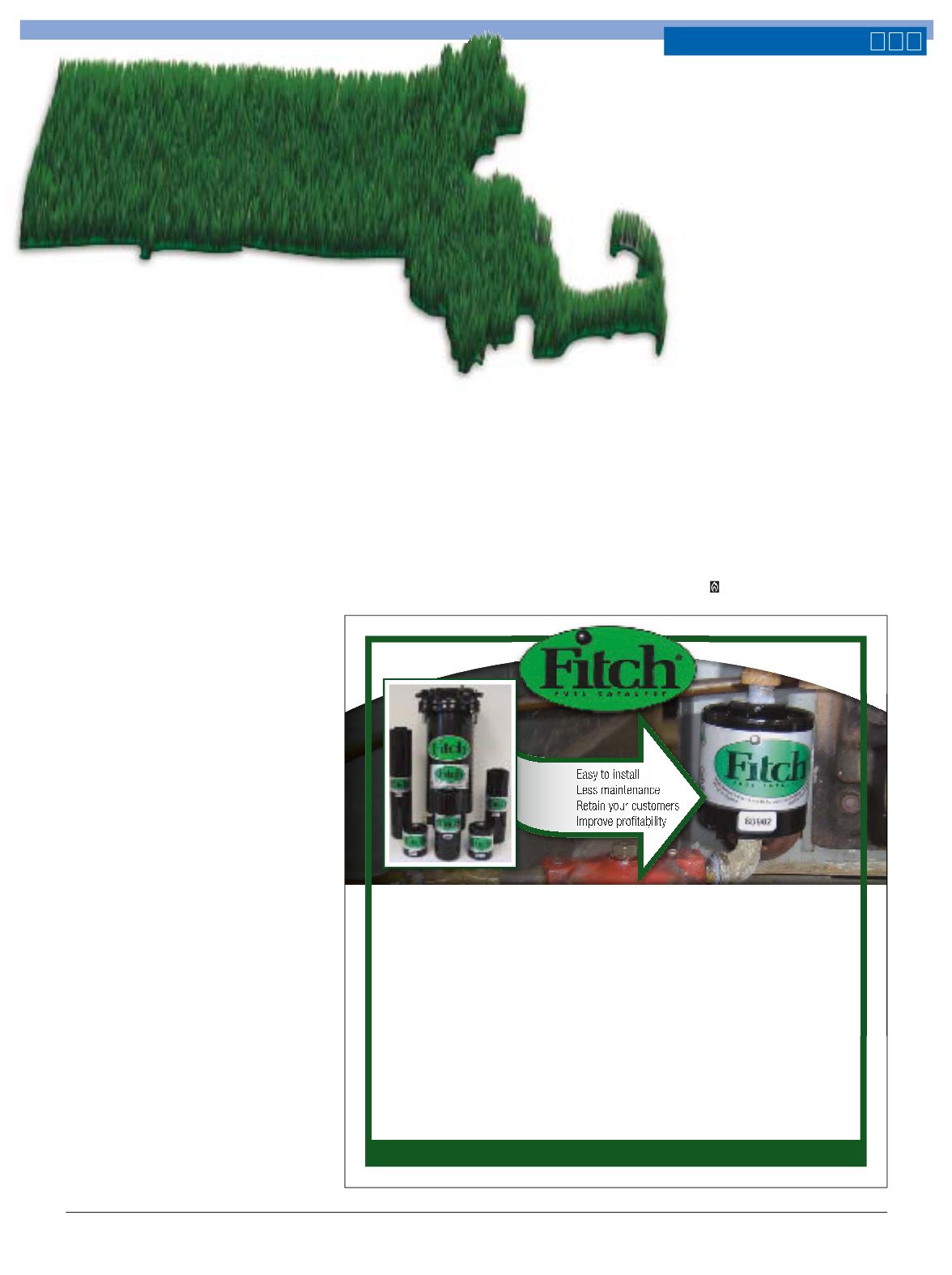
iViLiÀÊÓä£ÎÊU Ó
Energy Efficiency
D8JJ8:?LJ<KKJ @J K?< DFJK <E<I>P$
efficient state in the nation for the third
year in a row, according to the American
Council for an Energy-Efficient Economy’s
(ACEEE) annual State Energy Efficiency
Scorecard.
The p to 10 states for
gy ener
y,
efficienc
according to ACEEE, are Massachusetts,
California, New York, Oregon, Connecticut,
Rhode Island, Vermont, Washington,
Maryland, and Illinois. Massachusetts
retains the top spot for the third year in
a row based on its continued commit-
ment to energy efficiency under its Green
Communities Act.
In California, requirements for reduc-
tions in greenhouse gas (GHG) emissions
have led it to identify several strategies
for smart growth, keeping the state in a
top position at No. 2. Connecticut is also
closing the gap due to passage of an energy
bill in 2013 that calls for the benchmarking
of state buildings; expanding combined heat
and power programs; and doubling funding
for energy efficiency programs.
The five states most in need of improve-
ment (starting with dead last) are North
Dakota; Wyoming; South Dakota; Alaska;
and Mississippi. However, Mississippi also
appears on ACEEE’s list of the top five
most improved states, revealing an upward
trend as more and more states embrace
energy efficiency. Last year Mississippi
passed comprehensive energy legislation
that included energy efficiency as a major
component. The bill included provisions
setting an energy code for commercial and
state-owned buildings. Mississippi is now
set to become a regional leader in energy
efficiency. West Virginia’s score improved
due to the state adopting stronger building
codes. The other three most improved states
in 2013 were Maine, Kansas, and Ohio.
U.S. Department of Energy Secretary
Dr. Ernest Moniz said, “Energy efficiency
is a critical tool for cutting harmful carbon
emissions and the best way to reduce energy
bills for America’s families. We applaud the
continued progress in energy efficiency
nationwide and stand ready to help states
as they make their communities cleaner and
more
,
sustainable while
g savin p y tax a er
dollars and fostering greater economic
growth.”
Massachusetts Governor Deval Patrick
said: “Massachusetts continues to lead
the nation in energy efficiency because we
have made the choice to shape our future,
rather than leave it to chance. We will con-
tinue to focus on policies that create jobs,
decrease dependence on imported energy
sources and protect our environment by
reducing emissions.”
ACEEE xecutive
E
Director Steve Nadel
said: “In y ever region we are seeing states
embrace
rgy ene saving measures with
growing usiasm.
enth
From Massachusetts,
which
ues
contin to be the pacesetter in
the race o t cut down energy waste, to
ssippi,
Missi
which is emerging as
a regional star, state govern-
ents m are proving that smart
olicy p can still cross partisan
ivides.”
d
In the seventh edition of the
tate S Scorecard, ACEEE ranks
ates st
on their energy efficiency
olicy p and program efforts, and
vides
pro
recommendations for
ywa s that tes sta can improve their energy
efficiency performance in a variety of policy
areas. The State Scorecard report serves
as a benchmark for state efforts on energy
efficiency policies and programs each year,
encouraging states to strengthen their
efficiency commitments as a pragmatic and
effective strategy for promoting economic
growth, securing environmental benefits,
and increasing their communities’ resil-
ience in the face of uncertain energy costs
and supplies.
8:<<< 8^X`e
EXd\j DXjj%
Dfjk <]ÔZ`\ek JkXk\
University of Connecticut Research Institute analyzed the Fitch
Fuel Catalyst in the lab and in the field and confirms that:
Ü
A
molecular reformulation
passing thr
Ü
This
reformulation positively affects the combustion
within the f
Ü
The averag
reveals
6.7% to 36% reduction in fuel consumption,
with an average of 14.8%
across all installations.
Ü
Residential installations tended to yield greater reductions,
averaging
20.3%, versus commercial installations,
which averaged 14.0%.
s INFO FITCHFUELCATALYST COM
of the fuel takes place when
ough the Fitch Fuel Catalyst.
urnace, enabling a reduction in nozzle size.
e user in observed and historical instances
Ü
Ü
Ü
Ü


